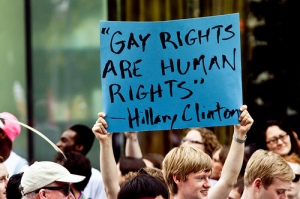The Diversity Challenge: Part 3 of 5
Editor’s note: Today we’re continuing our series on diversity, targeting specific questions to invite discussion and exploration of related topics. If you have a question that you’d like to see addressed, add it in the comments below!
***
Part 3: Which “minority” group is possibly the most underrepresented in the HRD diversity literature?
Efforts to increase diversity in the workforce typically focus on race and gender-related issues, but fall short of addressing lesbian, gay and bisexual identity–and the privileges that society bestows on individuals who identify as straight, thereby helping them advance into leadership positions.
Joshua C. Collins of Florida International University published “Identity Matters: A Critical Exploration of Lesbian, Gay, and Bisexual Identity and Leadership in HRD” on June 1, 2012 in Human Resource Development Review.
Conversations about leadership that primarily consider dominant identity groups (e.g., White people, heterosexuals, men, the able-bodied, etc.) may be less productive than those that think about leadership from the perspective of the diverse groups of people that make up our workforces. HRD’s history is gendered and has demonstrated reluctance to discuss topics critically oriented toward individuals with minority-status identities. Presently lesbian, gay, and bisexual (LGB) identity has not been addressed in the HRD leadership literature. Utilizing prior HRD leadership literature synthesized via an integrative literature review method, a popular ally development model, and six strategies for being critical in HRD, the purpose of this article is to synthesize an LGB-inclusive definition of leadership in HRD.
To learn more about Human Resource Development Review, please follow this link. To receive email alerts about newly published articles, click here.
Up next in the series: What can organizations gain from the interactions of individuals in diverse groups?





























































































